#Lesser Marsh Grasshopper
Explore tagged Tumblr posts
Text




Orthoptera - Decticus verrucivorus, Chorthippus albomarginatus, Roeseliana roeselii
#insects#orthoptera#grasshopper#cricket#insecta#tw insects#katydids crickets#tettigoniidae#Wart-biter#Roesel's Bush-cricket#Lesser Marsh Grasshopper#acrididae
3 notes
·
View notes
Text
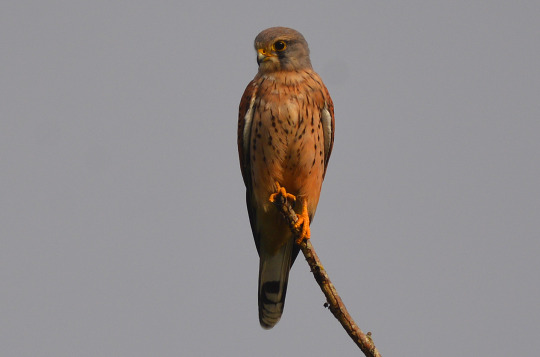


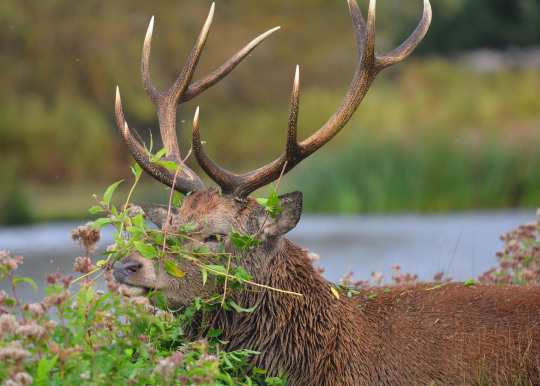
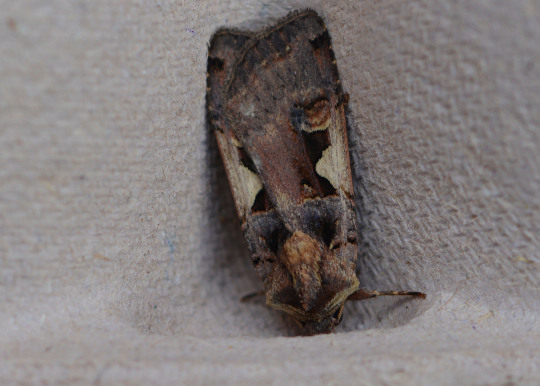
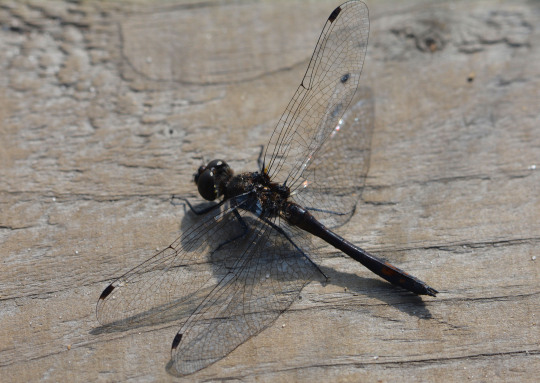
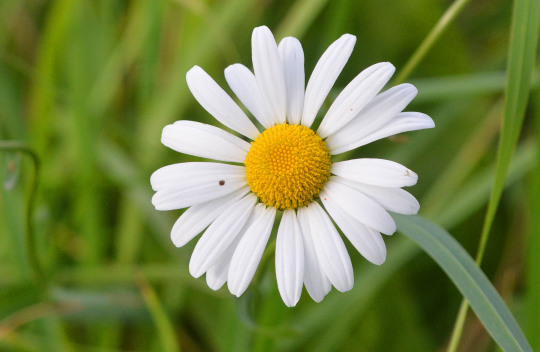
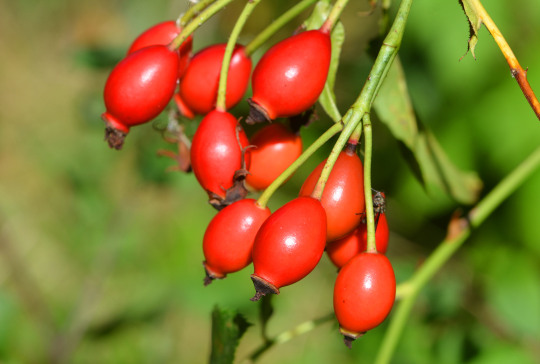
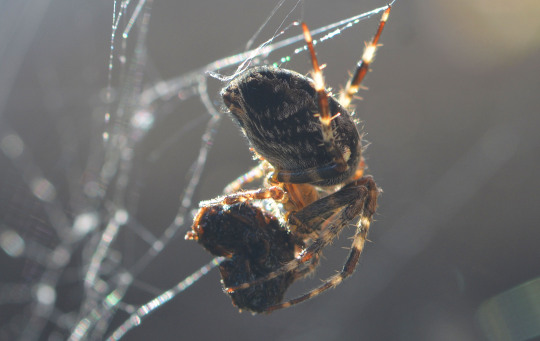
Nine of my favourite flora and fauna photos I took in September 2023 and month summary
The photos are of; Kestrel at Lakeside Country Park, Clouded Yellow at Old Winchester Hill, Osprey from a boat trip around Poole Harbour with Birds of Poole Harbour, Red Deer at Bushy Park, Setaceous Hebrew Character at home, Black Darter at Thursley Common, oxeye daisy and rose hips at Lakeside and spider with prey in the front garden.
As hoped in the midst of bird migration, changing times in the year and with this past week off work to pack with big trips September was a super and packed wildlife watching and photography month for me with so much seen and many places visited. For birdwatching migration was the theme of the month again as I picked up birds I needed Yellow Wagtail and Little Stint with a few seen for my year list, seeing the Red-necked Phalarope a week ago Pennington brought in by a storm was a massive bonus as a top species for my birding year and Monday's Minsmere trip paid off to allow us to see one we wanted to a Bittern. It's surely been my finest year of Ospreys with the amount I've seen and September contained much of the string of late summer/autumn sightings in the south which has been a phenomenal run for me. Other standout birds for me this month have of course been those two White-tailed Eagles seen on the boat trip too, Marsh Harrier, Peregrine, Hobby, a fair few Avocets, Ruffs and Curlew Sandpipers such fine and gorgeous waders in a strong wader month, Spoonbill and a smartly marked and colourful duck quartet of many Teals and Gadwall and Wigeon and Shoveler. Great Crested Grebe, Kingfisher, Great Spotted Woodpecker and Jay alongside Kestrel and Coot were patch highlights at Lakeside this month with Jays enjoyed elsewhere as we get further into autumn.
For butterflies the final piece of my extraordinary 2023 jigsaw was laid when we excitingly saw our first Clouded Yellow of the year on a hot and sunny day at the start of the month at Old Winchester Hill, an exhilarating moment with an exquisite species. Whilst the butterfly season quietened down overall in a month with a fair bit of hot and sunny weather a few species prevailed/re-emerged into my year with great and in places numerous times seeing Small Copper, Small Heath, Meadow Brown, Speckled Wood, Green-veined White, Peacock, Comma and of course Red Admiral this month with me making the most of Chalkhill and Adonis Blue in the Old Winchester Hill visit. For much of the month we did moth traps at weekends, this delve into an activity we hadn't done before allowed us to see many gems such as the Setaceous Hebrew Character, Small Blood-vein, Treble-bar, Garden Carpet, Lesser Broad-bordered Yellow Underwing, Large Yellow Underwing, Light Emerald, the Nutmeg, Vine's Rustic and loads of L-album Wainscots, Willow Beauty and Square-spot Rustics. It was fun doing this and the Snout was a key moth this month that came into the house.
Dragonflies and damselflies did take the baton from butterflies a bit as expected, with many wonderful views of Migrant Hawker, Southern Hawker and Common Darter such key species as the season goes on at a few places and Blue-tailed Damselfly and Common Blue Damselfly. Alluring miniature Black Darters at Thursley were a treat to see on Tuesday with them my first of the year my dragonfly and damselfly year list like my five others this year became my highest ever, and I was thrilled to see Emerald Damselflies again this year at Minsmere and Thursley this week. It was a really good month for areas of nature I'm less familiar with especially spiders with many seen well from orbweavers out the front to a harvestman at Thursley. Hornet, bees, wasp, beetles, ants, crickets and grasshoppers were highlights this month too.
It was a mega mammal month with Red, Fallow, Sika and Muntjac Deer, Red Squirrel and Water Vole massive species of the week off over the past week real big highlights of my wildlife year, and I saw Rabbit, Roe Deer and Grey Squirrel well this month. For flowers the season waned a little but species such as common toadflax, devil's-bit scabious, creeping thistle, wild carrot, pineappleweed, ragwort, water mint, common, musk and marsh mallow and heathers kept me going. Sundew was a blockbuster of my month this week at Thursley. In a bumper year for hawthorn especially I was very much taken by fruits this month enjoying loads of hawthorn and rose hips, blackthorn sloes, guelder rose berries and acorns especially. I also enjoyed seeing seed heads of the likes of carrot, hogweed and ragwort too. Shortly I shall do another post with nine of my favourite landscape and fungi photos I took this month and some thoughts. I hope you all have a good October.
#photography#clouded yellow#old winchester hill#kestrel#lakeside country park#osprey#poole harbour#setaceous hebrew character#eastleigh#black darter#thursley#thursley common#surrey#dorset#hampshire#rspb minsmere#suffolk#red deer#bushy park#london#oxeye daisy#spider#rose hips#september#white-tailed eagle#small copper#migrant hawker#light emerald#europe#england
2 notes
·
View notes
Text

Cool bug FOUND in garden... I think it's a Lesser Marsh Grasshopper?
#grasshopper#insecta#orthoptera#not confident enough to tag it lower than that lol#a lot of pics of c. albomarginatus has more green and shorter antennae so... dunno LOL!
1 note
·
View note
Note
So I am terrified of bugs, they freak me the fuck out like nothing else in the world, but I'm heading out to Argonian lands soon to accompany a lesser lord on a diplomatic mission and I was hoping you could recommend me some dishes that are least likely to trigger my phobia. Things that don't look like bugs perhaps? Or something with a distinctly Not Bug texture that I can just eat with my eyes closed? I don't want to accidentally offend someone and endanger the safety of myself and my superior. Thank you in advance
It's a common misconception that Argonian cuisine is heavy on the insects, but the backbone of Black Marsh cuisine is actually seafood! This is what I would recommend asking for, but most Argonians are understanding that dryskin stomachs aren't anywhere near as resilient as theirs, and I doubt that they will be offering you any roasted grasshopper chili anytime soon (your loss).
There are many delicious things you can try and will possibly love: baked fish paste with galangal and chilis, barbecued mantis shrimp and king prawns, coconut-baked snapper, tuna steak with green chili sambal, and clam soup with lemongrass are just some of the delights you'll find. ~Talviel
#Asks#Argonian#Seafood#Food#World building#worldbuilding#Tes#The Elder Scrolls#Tastes of Tamriel#tastesoftamriel
30 notes
·
View notes
Link
Acadian Flycatcher peet-seet or peet-suh or peet
Alder Flycatcher fitz-bee-
American Avocet wheek or kleet (repeated in flight)
American Bittern gulp-a-pump woonk-a-chunk
American Black Duck quack quack quack (lower than a Mallard)
American Black Oystercatcher wheep-wheep-wheep (rapid; clipped)
American Coot ka-ha; ka-ha kuh-uk!; kuh-uk! (loud; clear)
American Crow caw-caw-caw-caw-koodle-yah; koodle-yah (trilly voice)
American Golden Plover looo-eee! poo-too-eee!; poo-too-eee!
American Goldfinch pa-chip-chip-chip per-chick-a-ree po-ta-to-chip (and dip {in flight})
American Kestrel klee; klee; klee
American Pipit chwee; chwee; chwee (thin) pipit-pipit
American Redstart tzee-tzee-tzee-tzeeeo
American Robin cheer-up; cheer-a-lee; cheer-ee-o, whinny
American Wigeon squeaky; nasal whistle
American Woodcock peeent; peeent; peeent (nasal)
Anna's Hummingbird chee-ik-ee-ik-ee-ik (grating; squeaky)
Ash-throated Flycatcher ka-brick ka-wheer prrrrrt (buzzy)
Bachman's Sparrow highly variable - clear; liquid; whistled phrases
Bachman's Sparrow seeeee; slip-slip-slip-slip-slip
Baltimore Oriole flute-like; disjointed series of notes here; here; come right here; dear
Barn Owl screeeeeee (hissing - long)
Barn Swallow twittering (rapid) tit-tit-tit-tit (rapid staccato)
Barred Owl who-cooks-for-you; who-cooks-for-you-all
Bay-breasted Warbler tee-zee-tee-zee-tee-zee-tee (very rapid; hp)
Belted Kingfisher stuttering; non-musical; dry rattle in-flight
Bewick's Wren like Song Sparrow; but thinner; more rapid
Black & White Warbler wee-zee; wee-zee; wee-zee (like a squeaky toy)
Black Rail kicky-chew; kiki-krrr; pee-pee-toe
Black Skimmer kaup; kaup; kaup (clear-noted)
Black-bellied Plover pee-a-wee!; whee-er-wee!
Black-billed Cuckoo ku-ku-ku
Black-billed Magpie maaagh?! wenk-wenk or wenk-wenk-wenk
Blackburnian Warbler see-say; teetsa-teetsa-teetsa- zee-zee-zee
Black-capped Chickadee chk-a-dee-dee-dee (rapid; higher-pitched than Carolina)
Black-capped Chickadee fee-bee
Black-chinned Hummingbird tchew (soft; flat)
Black-crowned Night Heron quawlk
Black-headed Grosbeak ik (sharply) robin-like; but more musical spik
Black-legged Kittiwake kitty-waaak
Black-necked Stilt kyip; kyip; kyip
Blackpoll Warbler chipping trill
Black-throated Blue Warbler beer-beer-beer-beeee! (raspy) zur-zur-zur-zree! please; please; please squeeeeze I am so laz-eeeeee
Black-throated Gray Warbler zeedle-zeedle-zee-zeet-cha
Black-throated Green Warbler trees-trees-murmuring-trees zee-zee-zee-zee-zoo-zee
Black-whiskered Vireo Tim Kelly or Whip Tim Kelly
Blue Grosbeak chink; house finch-like; but lower
Blue Jay fee-der-de-lurp jay-jay-jay queedle-queedle-queedle-
Blue-gray Gnatcatcher zpeee (a bit raspy)
Blue-winged Warbler beee-bzzz; blue winged! (second syllable buzzy)
Bobolink plink; plink
Bobwhite toot-sweet! bob-white!
Bonaparte's Gull chrrr-chrrr-chrrr (rapid; buzzy)
Boreal Chickadee chick-che-day-day
Boreal Owl hooo-too-too-too-too...
Brewer's Blackbird ksh-eee (creaky)
Brewer's Sparrow seeeep (thin)
Bristle-thighed Curlew cheew-iew-iew-it
Broad-tailed Hummingbird chittering; thin, mixed with wing-hum
Broad-winged Hawk peet-seeeeep
Brown Creeper trill (hp; rapid) always as individuals
Brown Thrasher varied mocker-like phrases (repeated 2x) drop-it; drop-it; cover-it-up; cover-it-up; pull-it-up; pull-it-up
Brown-headed Cowbird bubble-bubble-zeeee!
Brown-headed Nuthatch kit-kit-kit-..or ki-dit; ki-dit (rapid)
Bufflehead (Fe) quack quack quack
Bullock's Oriole varied; rich whistles and mixed gutturals chuck chuck chuck-it-too-ee zhew zhew
Bushtit lisp (multiple; very hp) tsit (multiple; very hp)
California Quail kurr chi-ca-go; chi-ca-go qua-quer-go; qua-quer-go
Canada Goose honk; honk; honk
Canada Warbler chip-chupitty-swee-ditchety
Canyon Wren tewee; tewee; tewee (slowing) tsheee (raspy; metallic)
Cape May Warbler seet-seet-seet-seet (thin; hp)
Carolina Chickadee car-o-li-na (four notes) chk-a-dee-dee-dee fee-bee-fee-bay see-dee-dee-dee
Carolina Wren brrrrrrr (a brief; downslurred; rapid trill like thumbing comb tines) chooble-dee (varied triplet phrases) tea-kettle; tea-kettle; tea-kettle
Caspian Tern raaaah (raspy; hoarse)
Cassin's Finch chitty-up or chill-ee-up
Cedar Waxwing trill (hp; rapid) always in flocks zeee-zeee-zeee (hp trilled)
Cerulean Warbler chyoo-chyoo-chyoo-tseee (last syllable burry) trill (ending with buzzy-) beeee
Chestnut-sided Warbler pleased-pleased-pleased-pleased-ta-meetcha see-see-see-Miss-Beech'er
Chimney Swift chit-chit-chit-chit (rapid staccato) twittering (rapid)
Chipping Sparrow chipping trill (mechanical)
Chuck Will's Widow chuck-will's-widow
Clapper Rail tic-tic-tic-tic-tic-tic-.
Clark's Grebe kreeet (burry) kriiik (burry)
Clark's Nutcracker kraa-a-a-a (long; drawn-out); or kra-kra-kra-kra
Common Eider ow-oo-urr whoo-ooh; whoo-ooh
Common Goldeneye pee-ik (raspy)
Common Loon cooo-leee; cooo-leee (slow; plaintive) whinny
Common Merganser ah; ah; ah; ah (low; even croaking in flight)
Common Moorhen kip-kip-kip-
Common Nighthawk beeer pee-eet (nasal)
Common Poorwill poor-will; poor-will; poor-will
Common Raven cruck (harsh; raspy) tawk (metallic)
Common Ringed Plover poo-eep (in-flight)
Common Screech Owl woooooooo warbled
Common Snipe skaip wicka-wicka-wicka-
Common Tern kee-arr (trilly)
Common Yellowthroat witchety-witchety-witchety (slow) (Western race) tchep (flat and raspy)
Connecticut Warbler chee-pa-chuh; chee-pa-chuh; chee-pa-chuh; chee chik-a-too-ee; chik-a-too-ee
Cordilleran Flycatcher pseet; tri-i-i-ip; seet (thin; squeaky)
Dark-eyed Junco dit (repeated occasionally) smack (repeated occasionally) chipping trill (musical; tinkling)
Downy Woodpecker peeek (sharply) whinny
Eastern Bluebird pew or mew (sharply) chatter (harsh; brief)
Eastern Kingbird t-t-tseeep (electrical sputtering)
Eastern Meadowlark but-I-DO-love-you spring-of-the-year
Eastern Phoebe fee-beee (last syllable raspy)
Eastern Towhee too-wheee! drink-your-teeeee! hot dog; pickle-ickle-ickle
Eastern Wood Pewee pee-a-weee and pee-yer
Evening Grosbeak chirp or chiirrrp (burry)
Field Sparrow a ping-pong ball dropped onto a table increasing in rate and pitch
Fish Crow eh-eh; eh-eh (two-noted phrases)
Forster's Tern keeeeeeeeer zaaaah (raspy; nasal)
Gadwall (Ma) bek (buzzy) (Fe quacks like mallard)
Golden-crowned Kinglet see-see-see- (hp)
Golden-crowned Sparrow Oh; dear me!; three blind mice
Golden-winged Warbler beeee(buzzy trill)-bz-bz-bz
Grasshopper Sparrow pee-trip-treee (last syllable a raspy trill)
Gray Catbird meeeee-ew or maaaaaanh (nasal) varied mocker-like phrases (seldom repeated)
Gray-cheeked Thrush whee-wheeo-titi-whee (thin; nasal)
Great Blue Heron squawking or croaking (very raucous)
Great Gray Owl whoo-whoo-whoooo
Great Horned Owl hoot-a-hoot; hoo-hoo who's awake? me too
Great Kiskadee Qu'est-ce qu'il dit? Qu'est-ce qu'il dit? ("What's he saying?")
Great-crested Flycatcher prrreeeet (burry); wheeep
Greater Yellowlegs dear; dear; dear (sharply) klee-klee-klee tu-tu-tu (whistled, 3 or more notes)
Green Heron skelp skelp skelp
Green-tailed Towhee weet-churrr-chee-churrr (mixed sweet and burry notes)
Gull-billed Tern kay-week and za-za-za
Hairy Woodpecker pik (flat) whinny
Hammond's Flycatcher chip-chewy or chip-chewy-chew (hp and a bit burry)
Heerman's Gull kowok
Henslow's Sparrow tsip-a-tik (non-musical; repeated occasionally)
Hermit Thrush veer-veer-veer-veer- Why don'tcha come to me? Here I am right near you
Hooded Warbler a-weeta-weeta-weet-tee-o
Horned Lark pit-sit (hp) tee-seep (hp)
House Finch zreee! (included in varied; warbling song)
House Sparrow chiddik; chiddik (dry; non-musical)
House Wren stuttering; gurgling; musical;
Inca Dove no hope
Indigo Bunting varied phrases (in couplets) fire; fire; where? where? here; here; see it? see it?
Kentucky Warbler p'chee; p'chee; p'chee
Kildeer kill-deeeeer or kee-dee; kee-dee; kee-dee
King Rail hip-hip-hurrah (dry; rattly)
Lark Sparrow tsip (sharp)
Laughing Gull haa-haa-haa-haa (loud; laugh-like) laughter (raucous; clear-noted)
Lazuli Bunting zzzzzzd (buzzy)
Least Bittern wuff; wuff; wuff; wuff; wuff ku-ku-ku (lower and throatier than B-B Cuckoo)
Least Flycatcher che-bek
Least Sandpiper kreeet (thin; somewhat burry)
Least Tern zreeeeek
Lesser Goldfinch tee-yee! or tee-yer
Lesser Yellowlegs quu-quu (whistled - in pairs) tyooo-tyoo yoo-yoo; yoo-yoo-yoo
Limpkin kraaaaaah (loud; piercing; usually repeated)
Long-billed Curlew ker-lee
Long-billed Dowitcher keeeeek (in flight - may be repeated)
Louisiana Waterthrush chink tree; tree; tree terwitter-witter wit
MacGillivray's Warbler chiddle-chiddle-chiddle-turtle chip-chewy or chip-chewy-chew (hp; clearer than Hammond's Flyc.) tsik (low; sharp)
Magnolia Warbler weeta-weeta-weetsee weeta-weeta-wit-chew I'm-I'm-I'm-so-sweet one; two; three; four; six
Mallard quack quack quack
Marbled Godwit god-wit or ker-whit raddika; raddika; raddika
Marsh Wren varied; complicated; fast; bubbly and busy
Mountain Chickadee tsik-a-zee-zee-zee (raspier than Carolina)
Mourning Dove hooo-ah hoo-hoo-hoo chirry-chirry-chirry-choreeo
Mourning Warbler turdle; turdle; turdle; two-to-you
Nashville Warbler trill in two parts - 2nd faster and lower in pitch see-bit-see-bit-see-bit; see-see-see-see (2-pt.)
Northern Cardinal cheer-cheer-cheer-purty-purty-purty-
Northern Flicker kleeeyer wik-wik-wik Northern Flicker (courting) squeechu-squeechu-squeechu
Northern Mockingbird varied phrases (thrice or more repeated)
Northern Parula Warbler trill! (fast rising; ending with)-tsyoo zeeeeeeeeeeeeeee(buzzy)-chyoo
Northern Pintail (Ma) prrrip; prrrip (low; stuttery)
Northern Pygmy Owl too-too-too (clear notes)
Northern Saw-whet Owl too-too-too (clear notes)
Northern Shoveler (Ma) chik-chik; chik-chik (Fe quacks like mallard)
Northern Waterthrush twit-twit-twit; sweet-sweet-sweet; chew-chew-chew
Oldsquaw ow-ow-ow-a-la
Olive-sided Flycatcher pip-pip or pip-pip-pip quick; three-beers
Orange-crowned Warbler trill (ascending/accelerating; then tumbles at end)
Orchard Oriole warbling - varied phrases; incl. guttural notes
Osprey kyew; kyew; kyew; kyew; kyew
Ovenbird p'cheer - p'cheer - p'cheer t-cheer; t-cheer; t-cheer
Pacific Loon kwa-wee!
Pacific-slope Flycatcher see-a-weeeet! seeet (sharp; h.p)
Palm Warbler trill (weak and buzzy)
Pectoral Sandpiper krick (low-voiced)
Pied-Billed Grebe gulp; gulp; gulp kuk-kuk-kow-kow-kow-kowp-kowp
Pileated Woodpecker kik-kik-kik-kik-kik (rate & pitch rise then fall)
Pine Siskin zreeeeeee! (buzzy)
Pine Warbler chipping trill
Piping Plover pip-pip-pip
Plain Titmouse tsik-a-dee
Prairie Warbler zee-zee-zee-zee (steady rise in pitch)
Prothonotary Warbler zweet; zweet; zweet (single pitch)
Purple Finch warbling - varied phrases; fast; lively; brief
Pygmy Nuthatch pippit; pippit; pippit
Raven squawking (raucous)
Red-bellied Woodpecker churrr; churrr (throaty; deeply trilled)
Red-breasted Nuthatch ank-ank-ank (nasal monotone)
Red-eyed Vireo where are you? and here I am
Red-headed Woodpecker squeer; squeer (raspy)
Red-shouldered Hawk kee-yer; kee-yer; kee-yer.
Red-tailed Hawk keeeeeeeeer
Red-throated Loon kwuk
Red-winged Blackbird chortle-deeeeee (hp and drawn-out last syllable) conk-a-reeeeeeeee tseer; tseer
Ring-necked Pheasant kok-kok (squawky; raucous; followed by wing-whir)
Rock Wren ch-reee; ch-reee; ch-reee (a bit trilly-buzzy) chee-urr; chee-urr; chee-urr (a bit raspy) tik-eer
Rose-breasted Grosbeak cheer-up; cheer-a-lee; cheer-ee-o chink
Royal Tern keeer (trilled)
Ruby-crowned Kinglet ji-dit; ji-dit; ji-dit (rattly) too-fritchyoo-fritchyoo-fritchyoo-
Ruby-throated Hummingbird t-t-t-t-t-t-t (soft; rapid; excited)
Ruffed Grouse drumming-thumping; accelerates into a whir
Rufous Hummingbird zee-chuppity-chuppity (buzzy)
Rusty Blackbird check ksh-a-leeee (rusty-squeaky)
Sanderling plik-plik-plik
Sandhill Crane garoo-a-a-a (stuttery)
Savannah Sparrow zit-zit-zit-zeeee-zaaay (burry-raspy)
Say's Phoebe pi-weer or pee-eee!
Scaled Quail Paark! Pe-cos; Pe-cos; Pe-cos
Scarlet Tanager cheer-up; cheer-a-lee; cheer-ee-o (burry; raspy) chick-burrr (last syllable rapidly trilled)
Scarlet Tanager hurry; worry; blurry; flurry (burry)
Scrub Jay shaaaaack (drawn-out; grating) zreeeeek
Seaside Sparrow chup-chup-tzeeee
Sedge Wren chip; chip or chip; chip; chrrrrr-rrr
Semipalmated Plover chureee! churrrk (burry)
Sharp-tailed Sparrow tee-shaay (raspy)
Short-billed Dowitcher tu-tu-tu (in flight - may be repeated)
Solitary Sandpiper peet-weet-weet or peet
Solitary Vireo chu-whee; cheer-ee-oh Come here Jimmy quickly
Song Sparrow Maids-maids-maids-put-on-your-tea-kettle-ettle-ettle Hip; hip; hip hurrah boys; spring is here! Madge; Madge; Madge pick beetles off; the water's hot
Sora ker-wee ker-wee(descending whinny)
Spotted Sandpiper peet-peet-peet-peet weet-weet-weet-weet
Sprague's Pipit ching-a-ring-a-ring-a-ring-a-ring-a-ring-a (descending)
Starling wolf-whistle (breathy)
Steller's Jay shaaaaack (drawn-out; grating) shook-shook-shook-shook-shook
Summer Tanager cheer-up; cheer-a-lee (bouncy - musical)
Summer Tanager piky-tucky-tuck or pik-a-tuck
Swainson's Hawk kreeeeeeeeeerr (drawn-out; shrill; plaintive)
Swainson's Thrush rurrip; rurrip whit; whit
Swainson's Warbler whee; whee; whee whip-poor-will
Swamp Sparrow chipping trill (slower; staccato)
Tennessee Warbler tika-tika-tika; swee-swee-swee; chay-chay-chay
Tufted Titmouse cheeva; cheeva; cheeva fer-da; fer-da; fer-da here; here; here peter-peter-peter-
Tundra Swan woo-ho and woo-woo
Upland Sandpiper ch-wut wolf-whistle (long; drawn-out)
Varied Thrush chyup
Veery veer-veer-veer-veer- (ethereal)
Vesper Sparrow like Song Sparrow; but lower; more guttural Listen to my evening sing-ing-ing-ing here-here; where-where; all-together-down-the-hill
Virginia Rail ki-dik; ki-dik; ki-dik tic-tic-mcgreer
Warbling Vireo warbled phrases (complicated) If I sees you; I will seize you; and I'll squeeze you till you squirt (to a caterpillar) brigadier; brigadier; briga-tee
Western Bluebird few (sofly)
Western Grebe krik-krik
Western Kingbird kit
Western Kingbird whit; whit; whit
Western Meadowlark flute-like; 7-10 gurgling notes
Western Screech-Owl accelerating hollow whistles; constant pitch
Western Tanager pri-di-dik
Western Towhee chup-chup-zeeee!
Western Wood Pewee peeer (burry)
Whimbrel ti-ti-ti-ti-ti-ti (clear; 5-7; rapid pace) whistled notes - clear; 5-7; rapid pace
Whippoorwill whip-poor-will
White-breasted Nuthatch anh-anh-anh-anh- (nasally) tooy-tooy-tooy-tooy wee-wee-wee-wee-who-who-who-who-
White-crowned Sparrow more; more; more cheezies; please pink (loudly) tseeeep (thin)
White-eyed Vireo chick; per-wee-tee-o; chick or chick-per-wee-o Quick give me a rain check Spit and see if I care; spit!
White-throated Sparrow O Sweet Canada; Canada; Canada O-san-pibbity-pibbity-pibbity
White-throated Swift je-je-je-je-je-je-je- (shrill; excited)
Whooping Crane ker-laa; ker-laa (second note higher-pitched)
Wild Turkey gobble-gobble-gobble-
Willet pill-will-willet
Willow Flycatcher fitz-bew (burry)
Wilson's Warbler chee-chee-chee; chet-chet-chet-chet
Winter Wren varied; complicated; bubbly and busy
Wood Duck jeeeeeeee! !-sliding (hp) whistle whoo-eek (breathy; whistley)
Wood Thrush chk-chk-chk (dry-subtle) ra-vi-o-li (flute-like) ee-oh-lay (flute-like - last note trilly) ra-vi-o-li (flute-like) oo-duh-lay-oh or oodle-drrrr (last note trilly) fweet-fweet-fweet (rapid-fire)
Worm-eating Warbler trill (very rapid; even; mechanical)
Yellow Rail click click (typewriter-like) tik-tik; tik-tik-tik; (2-3 rhythm; repeated)
Yellow Warbler sweet; sweet; sweet; little-more-sweet
Yellow-bellied Flycatcher chu-wee; chu-wee killik
Yellow-bellied Sapsucker meeew (whiny; nasal)
Yellow-billed Cuckoo hoo-luh; hoo-luh; hoo-luh (1/sec; broken) ka-ka-ka- kowp-kowp-kowp
Yellow-breasted Chat whoit (whistled) wit; wit; wit or chak; chak; chak
Yellow-headed Blackbird hoarse; raspy notes and phrases
Yellow-rumped Warbler trill in two parts, 2nd higher or lower in pitch trill (weak; unvaried)
Yellow-throated Vireo three-Ay; three-Ay
Yellow-throated Warbler tsyoo-tsyoo-tsyoo-tsyoo -tswee
2 notes
·
View notes
Photo

Lesser Marsh Grasshopper - A Lesser Marsh grasshopper (I think) on a plant stem at RSPB Ouse Fen, on day 22 of 30 Days Wild. https://flic.kr/p/2jeoPZJ
0 notes
Photo

Large Marsh Grasshopper ~ Stethophyma grossum {explore} by Cosper Wosper Female. Another field survey for the LMGs today with the jolly folk from RoAM and Natural England. I think we are getting near the edge of their range now. Four males and three females found. Shot of a Lesser Marsh Grasshopper a couple of pictures along for comparison. :@) https://flic.kr/p/2haZGPo
0 notes
Photo
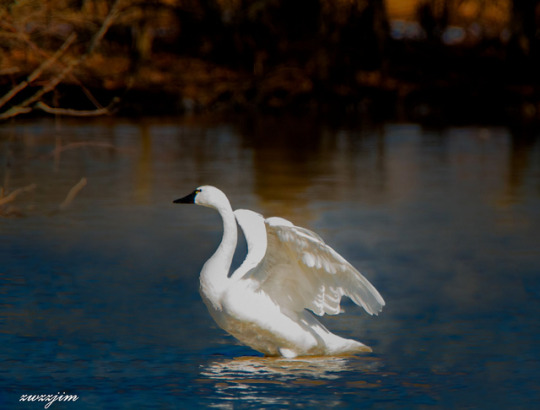
Tundra Swan middle Creek 801 by zwzzjim Since 1998, bald eagles have been full-time residents at the Pennsylvania Game Commission's Middle Creek Wildlife Management Area. The sizable stick nest, characteristic of bald eagles, sits in the forked branches of a sturdy red oak along the south shore of the lake. The nest is secure within the restricted Propagation Area, where entry is prohibited. The eagle pair guards its territory and shows little tolerance for other eagles in the area, particularly other adult eagles. Between late winter and early spring, the eagle nest is visible from several locations around the lake. Just north of the Visitors Center, a parking lot on the east side of Hopeland Road provides access to Willow Point, an observation area with a panoramic view of the upper end of the lake. The enjoyable hike to Willow Point takes about 10 minutes and is an easy, mostly level walk. From Willow Point, the distant nest is visible to the east with a spotting scope or binoculars. A flooded stand of dead trees protrudes from the water across the lake. Eagles often perch in the snags, particularly in the largest of the stand. After March 1, when the wildlife driving tour opens, visitors can follow the auto route past Stop #3, which leads to the opposite side of the snag area and nest site. Driving past this tour stop and just beyond the gated crossroads there is a good vantage point along the road to view the nest. A little farther on the tour, Stop #4 provides another location to spot eagles and the nest, probably the closest view. A good pair of binoculars or a spotting scope enhances eagle watching at Middle Creek, and late April is probably the best time to watch nesting activity. At this time, the nest is bustling with the adult eagles feeding and tending to the growing eaglets and deciduous trees have not leafed-out yet. Once trees attain their spring foliage, the eagle nest becomes concealed in the dense canopy. Check with Visitors Center staff for where-to-go details for eagles and other wildlife. The bald eagle pair inhabits Middle Creek throughout the year, fishing the shallow lake and surrounding ponds in all seasons. As open water diminishes with the frigid temperatures of winter and as opportunity presents itself, the eagles sometimes switch their diet from fish to waterfowl, which is almost always available here. The eagles most often prey on weak and injured ducks, geese and swans. The 360-acre main impoundment and about 70 additional acres of marsh-lined ponds, puddles and potholes along with the surrounding land provide vital food, cover and protected space for many wildlife species. More than 275 species of birds have been spotted throughout the seasons, including 23 species of ducks, five species of geese, loons, cormorants and grebes. Many of the birds pass through during spring and fall migrations, but 109 species breed and nest at Middle Creek. This property is designated as an Important Bird Area in PennsylvaniaOpens In A New Window and recognized as a Globally Significant Important Bird AreaOpens In A New Window because a large percent of the world's population of tundra swans and snow geese utilize Middle Creek as a staging ground during the northbound migration in late winter and early spring. Each February and March, at least 5,000 tundra swans come to Middle Creek to rest and feed. Numbers vary yearly and up to 15,000 swans may stop here on their way northward. Large whistling strings of swans descend out of the late winter skies over the complex and surrounding landscape. Depending on weather, the stay may be brief or last for weeks. With the loss of many southern wetlands, tundra swans have switched somewhat to agricultural areas for winter foraging. As their name indicates, these swans are bound for the great northern boreal wetlands. In North America, tundra swans are often called whistling swans. Snow geese numbers may exceed 170,000 birds, an unimaginable spectacle that attracts many human visitors. This staging along the Atlantic Flyway is marked by seemingly endless formations of white geese filling the skyline, flying to and from the surrounding agricultural fields. The massive flocks settle on the lake and periodically rise by the tens of thousands in a deafening cacophony. Like the swans, their stay is unpredictable and the birds may leave and continue north toward arctic breeding grounds at any time. In front of the Visitors Center, Hopeland Road passes between the main impoundment and a pond. A variety of ducks frequent this end of the lake and the pond. It is a good location to spot mallards, black ducks, green-winged teal, northern pintails, northern shovelers, gadwalls, American wigeon, ring-necked ducks and common mergansers during spring migration. Many of these ducks also migrate through in autumn. Some of the harder-to-spot ducks include buffleheads, ruddy ducks, lesser scaup, hooded mergansers, blue-winged teal and wood ducks. The best location to find wood ducks is at the series of ponds at the dead end road just before turning right to reach Stop #4 on the driving tour. Canada geese are commonly found year-round throughout the fields surrounding the lake and ponds. The ponds and streams that attract waterfowl also provide viewing opportunities for belted kingfishers and other smaller water birds. Ospreys often are seen in spring and fall during migration. As the driving tour leaves Hopeland Road, the tour passes through a small section of woodland and then opens to grasslands and crop fields as it meets Chapel Road. A right- or left-hand turn on Chapel Road will provide opportunities to encounter grassland birds, such as grasshopper sparrows, bobolinks, red-winged blackbirds and eastern meadowlarks. American kestrels, red-tailed hawks and northern harriers hunt these fields for voles, mice and other prey. Eastern bluebirds and tree swallows are common near the bird boxes throughout the complex. Killdeer, spotted sandpipers and least sandpipers are common at the muddy edges of the ponds and puddles while lesser and greater yellowlegs may be found wading in the shallow waters. The pools also are a place to find blue-winged teal, Wilson's snipe, green herons, solitary sandpipers and rusty blackbirds in migration. Songbirds like the gray catbird, northern cardinal, willow flycatcher, yellow warbler, common yellowthroat, eastern towhee and brown thrasher may be seen in the shrubby areas bordering the woodlands and fields. Both Baltimore and orchard orioles can be found in the tall trees at Middle Creek. The woodlands and their edges are good places to find the eastern wood-pewee, great crested flycatcher, wood thrush, veery and ovenbird. Hedgerows and open areas give you a chance to see tail-wagging eastern phoebe, the indominatible eastern kingbird, as well as the ever-popular and colorful indigo bunting and American goldfinch. In winter, the open fields of Middle Creek can be good places to spot rough-legged hawks, northern harriers, or, perhaps, short-eared owls, in addition to the resident red-tailed hawks. Horned larks, American pipits and snow buntings are among the prized open field birds that can be spotted on snowy fields. https://flic.kr/p/2f6sB2Y
0 notes
Text
This Photographer Is on a Mission to Document 12,000 Animal Species before They Go Extinct

Photo by Grahm S. Jones. Columbus Zoo and Aquarium, Ohio. After a photo shoot at the Columbus Zoo in Ohio, a clouded leopard cub climbs on Sartore’s head. The leopards, which live in Asian tropical forests, are illegally hunted for their spotted pelts. Courtesy Joel Sartore/National Geographic Photo Ark.
National Geographic photographer Joel Sartore is accustomed to taking photographs of the world’s most majestic creatures—from ocelots and bengal tigers to elephants and octopi. But recently, he visited a research lab at the University of Florida Gainesville to photograph bed bugs, carpenter ants, and termites.
“When you get up close and you look at any of these things, they're all amazing, they’re all remarkable,” Sartore says of the pests. The insects were given same star treatment as the more revered species that populate his ambitious photography project, the Photo Ark.
For over a decade, Sartore has traveled around the world, visiting zoos, aquariums, and wildlife sanctuaries, on a mission to photograph every animal species in human care—before they become extinct. He estimates that the ambitious project will take an estimated 25 years to complete, and will document some 12,000 species in total. More than simply an archive of the world’s most beautiful creatures, it’s a wake-up call: If we don’t change the way we treat the planet, half of the globe’s species could be gone by the year 2100.

An endangered baby Bornean orangutan, Pongo pygmaeus, named Aurora, with her adoptive mother, Cheyenne, a Bornean/Sumatran cross, Pongo pygmaeus x abelii, at the Houston Zoo. Photo by Joel Sartore/National Geographic Photo Ark.
Sartore first came up with the concept in 2005, when his wife was diagnosed with breast cancer and he took a year off from work to care for her. During that time, he looked back on the conservation stories he had done for National Geographic up to that point—covering everything from bald eagle recovery in the U.S. to koala rescue in Australia.
“I’m interested in shooting pictures that can go to work,” Sartore tells me. “They aren't just things that people look at and throw away; it inspires them to take action.”
Prior to the Photo Ark, Sartore was well aware that a timely story could have a measurable impact. One piece for National Geographic on Madidi National Park in Bolivia had helped to prevent the government from building a dam that would have drowned a thousand square miles of rainforest. But he found that stories like these were too few, and their shelf life too short.
“I was able to think at length about how to spend the second half of my life working towards conservation in a more meaningful, lasting way,” he recalls. The Photo Ark was born.

A federally endangered Florida panther, Puma concolor coryi, at Tampa's Lowry Park Zoo. Photo by Joel Sartore/National Geographic Photo Ark.
The project not only draws attention to the devastation of animal species up to this point, it shows the public which could be the next to go—in some cases, the animals being photographed are the last remaining examples of their species.
“Many of the zoos I go to are housing the only populations of these animals,” Sartore notes. “There are no more in the wild, so these zoos really are the keepers of the kingdom.”
Importantly, Sartore also lays out steps that we can take to prevent future extinction. Right now, for example, he’s advocating for monarch butterflies, whose species are dwindling. He’s asking his 926,000 Instagram followers to grow milkweed plants—which the butterflies need to live—and sharing resources on how and where to plant them.
In order to build the ark in a manageable way, Sartore chose to focus on animals being held in human care (“It’d be very hard to get a tiger to come out of the woods and pose on my backdrop”). He recognizes the important work these institutions are doing as caretakers.
“They're holding on to these animals for us until we get smart enough to restore the woods, to restore the marshes, to leave the oceans alone,” he offers.

A Coquerel's sifaka, Propithecus coquereli, at the Houston Zoo. Photo by Joel Sartore/National Geographic Photo Ark.

A pygmy slow loris, Nycticebus pygmaeus, at Omaha's Henry Doorly Zoo and Aquarium. Photo by Joel Sartore/National Geographic Photo Ark.
Sartore’s first photographs for the project were made at the children’s zoo closest to his home in Lincoln, Nebraska. From there he spun outwards, visiting Kansas City, then New Orleans—anywhere he could get to in his Prius, which carried his portable photo studio.
He now spends 75% of the year traveling to shoot animals. He’s covered nearly every species held in the U.S., and has started documenting creatures overseas. A new TV mini-series on the project, which premieres July 18 on PBS, shares footage from trips last year to New Zealand, Cameroon, and Madagascar, among other locations. Sartore has plans to visit Asia and Europe this fall. “A lot of the species we’ll see in Asia especially are endemic—meaning they’re restricted to that country or that location—so those are all important to get while there's still time,” he explains.
But no matter the destination, the method largely stays the same. When shooting smaller species, Sartore is given a space at the given institution to set up his mobile studio, and animals are brought to him. With larger animals, zoos prepare a space with a backdrop, and expose the animal to the set-up in preparation for the shoot. The photo sessions are often scheduled during feeding times—lunch is a helpful distraction. He tries to make the shoots quick and seamless, to put as little stress on the animals as possible.
The resulting photographs have a cohesive style—crisp, brightly lit, with black or white backdrops to best highlight the animal’s features. Sartore, aiming for the powerful emotional pull of eye contact, aims to shoot his subjects when they look directly into his lens.
“Eye contact is so attractive to human beings. We’re primates, we’re very motivated and reactive to eye contact, so that's what we're going for in every case,” he says. (Though he’s quick to add that some species he shoots—sponges, corals, anemones, and some insects—don’t have eyes in the first place.)

A federally threatened koala, Phascolarctos cinereus, with her babies at the Australia Zoo Wildlife Hospital. Photo by Joel Sartore/National Geographic Photo Ark.
Sartore has developed some tricks along the way. Small containment tents and a flash can coax certain subjects, especially smaller land animals, into eye contact. “It looks like they’re in there to get their senior prom pictures done,” he jokes.
The best way to share his images, he’s found, is through Instagram. Sartore himself has a hefty following, and his images are often featured on the main National Geographic account, which has nearly 80 million followers.
“It's a really good time to get the word out, and try to get species to go as viral as Kim Kardashian,” he quips, “to try to get people to pay attention to more than just celebrity news and the price at the gas pump.”
Presently, Sartore says, the world’s accredited zoos, aquariums, private breeders, and animal rehabilitation centers, hold around 13,000 species. But that number will drop over time as the last of some species die. “That number’s going to diminish at the same time that the number of species I've photographed is growing, so we’ll probably end up meeting at about 12,000,” he notes. Right now, he’s more than halfway there, with over 6,000 species documented.
Given that many of the species he shoots are the last of their kind, Sartore believes that for many animal, his photographs are the final chance to draw public attention to that animal’s endangerment. “Whether they're considered a pest, something glorious and beautiful like a bird of paradise or an elephant, or one of the non-charismatic species—the sparrows of the world, the toads, the salamanders, the grasshoppers—I try to be the voice for the voiceless.”
“It’s an honor and a big responsibility to to be entrusted to do this, and I try to treat them all equally,” he adds, “they're all loved and welcomed on board the Photo Ark.”
—Casey Lesser
from Artsy News
0 notes